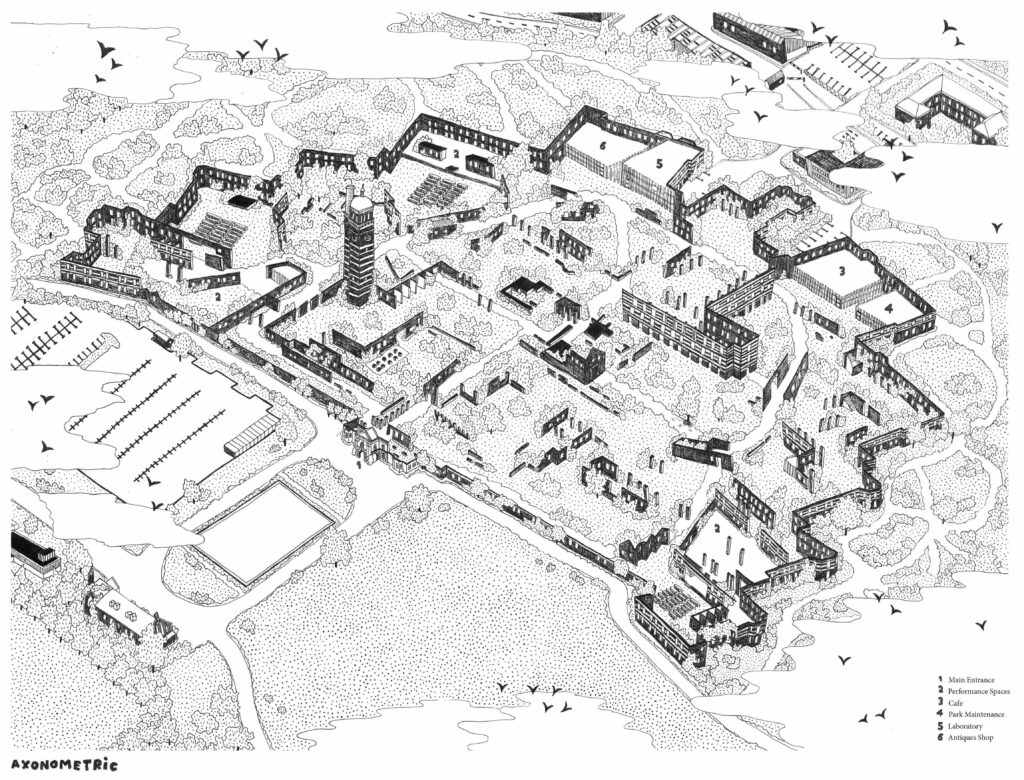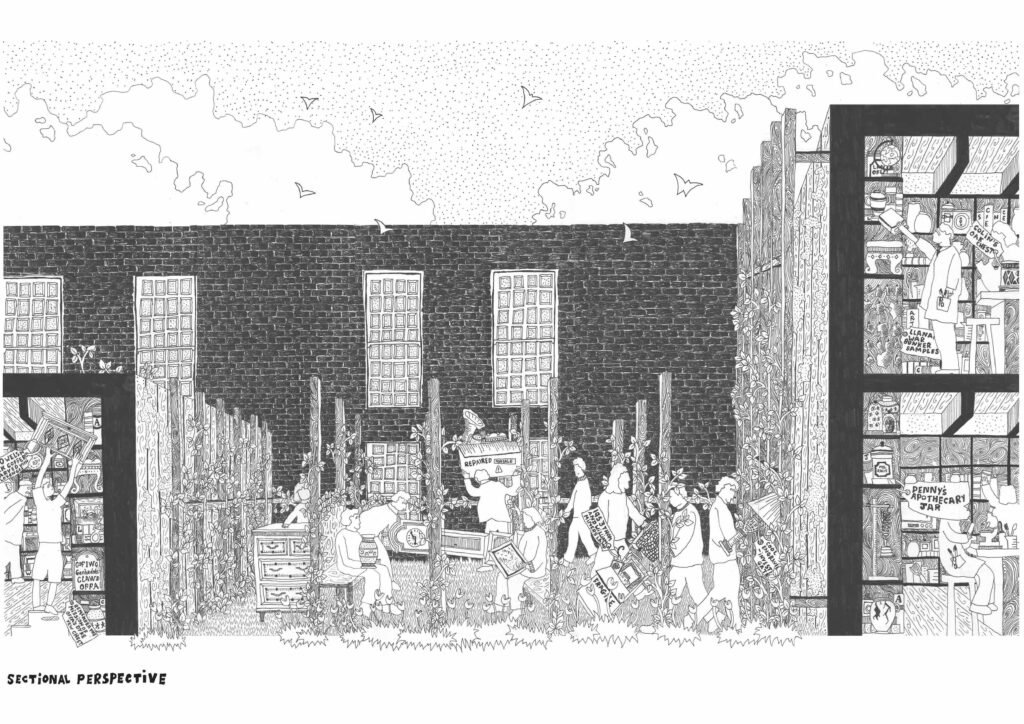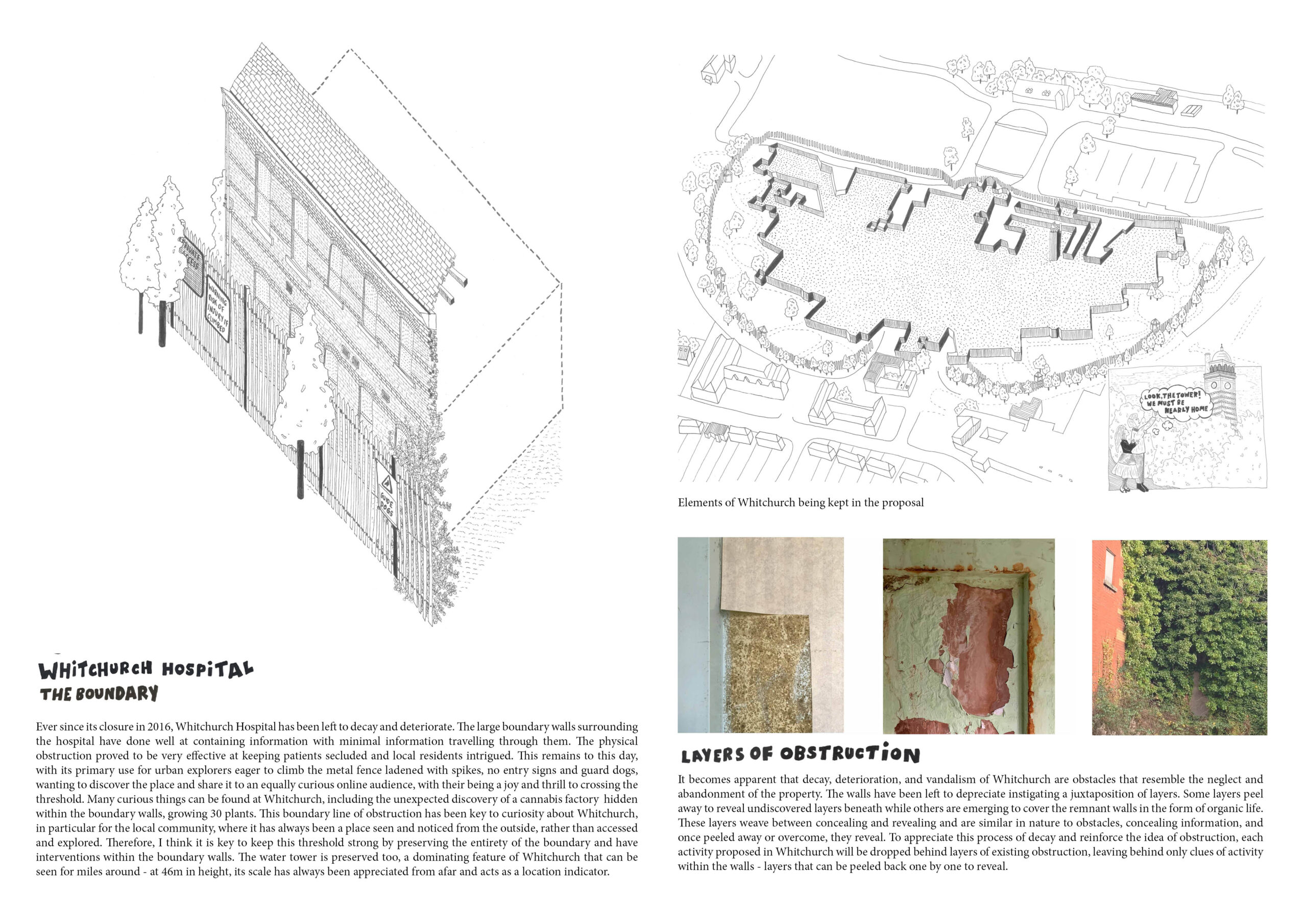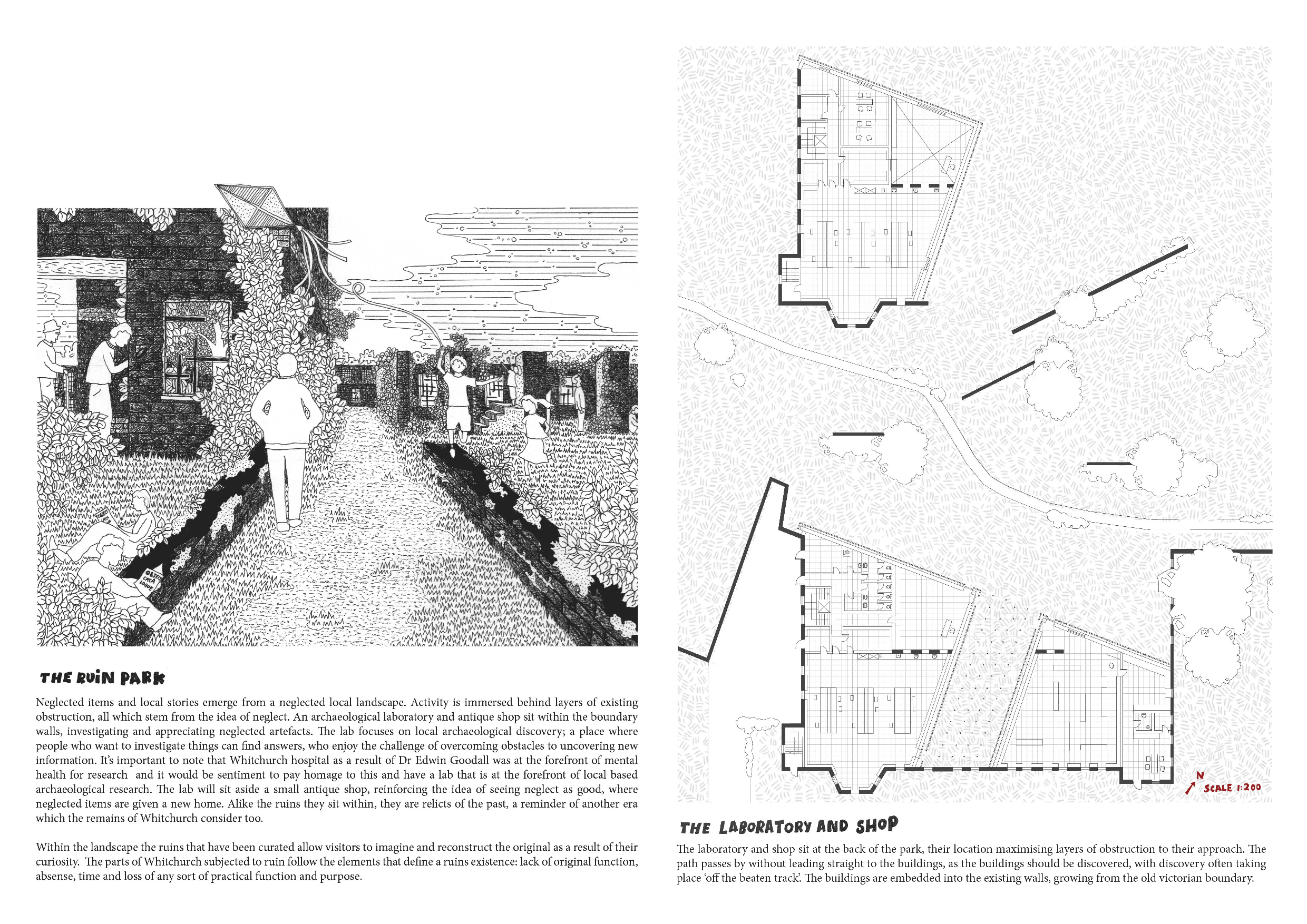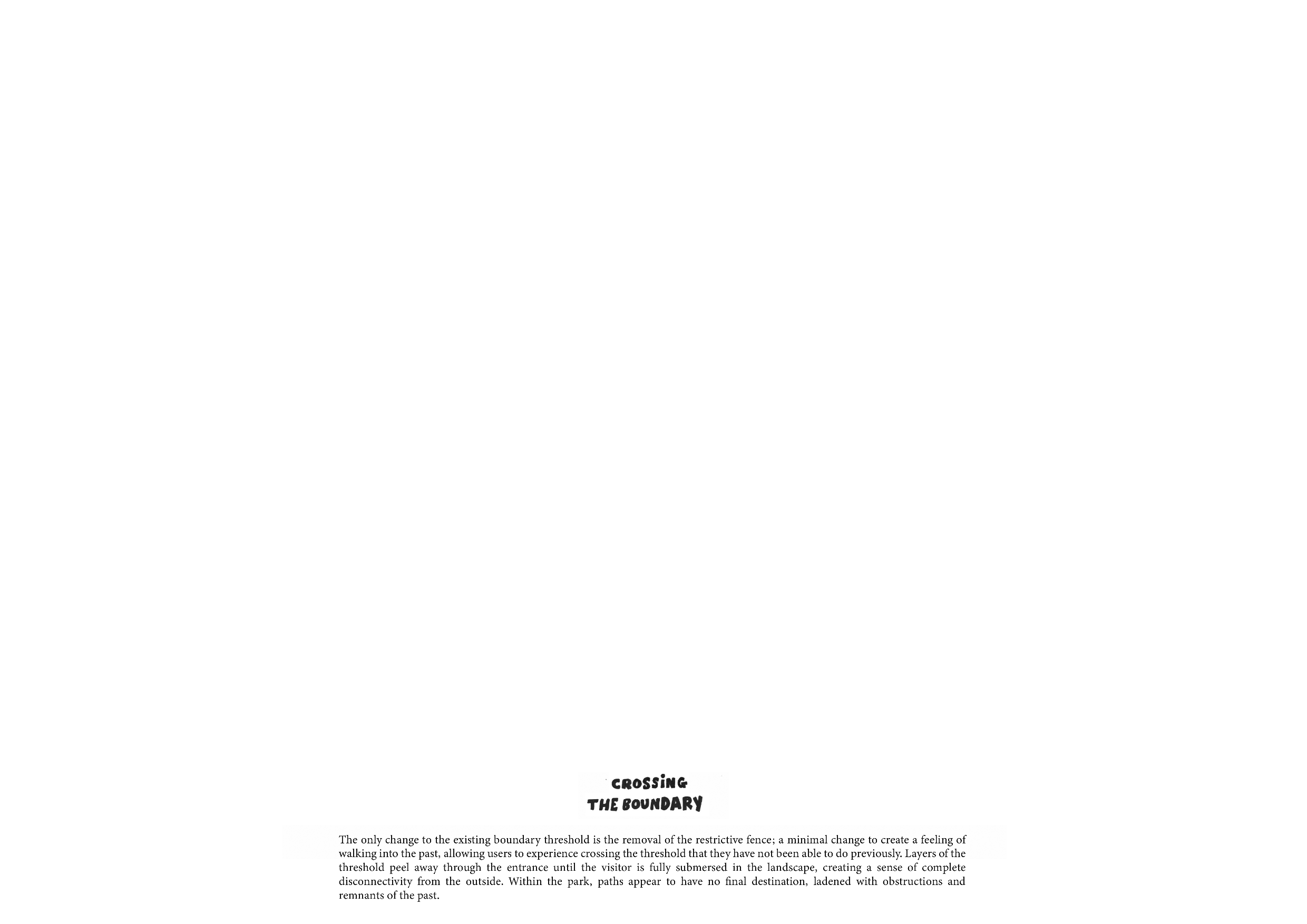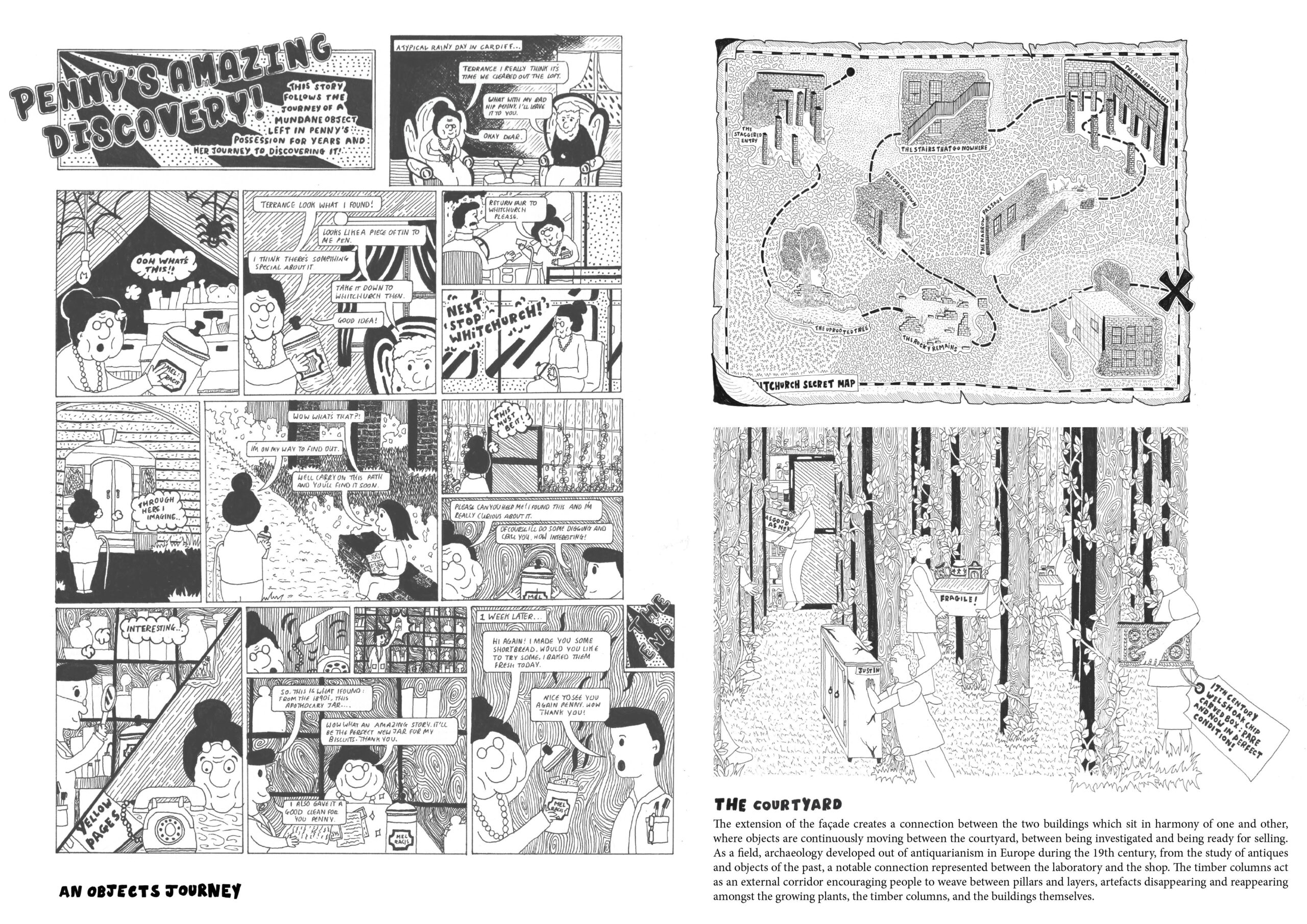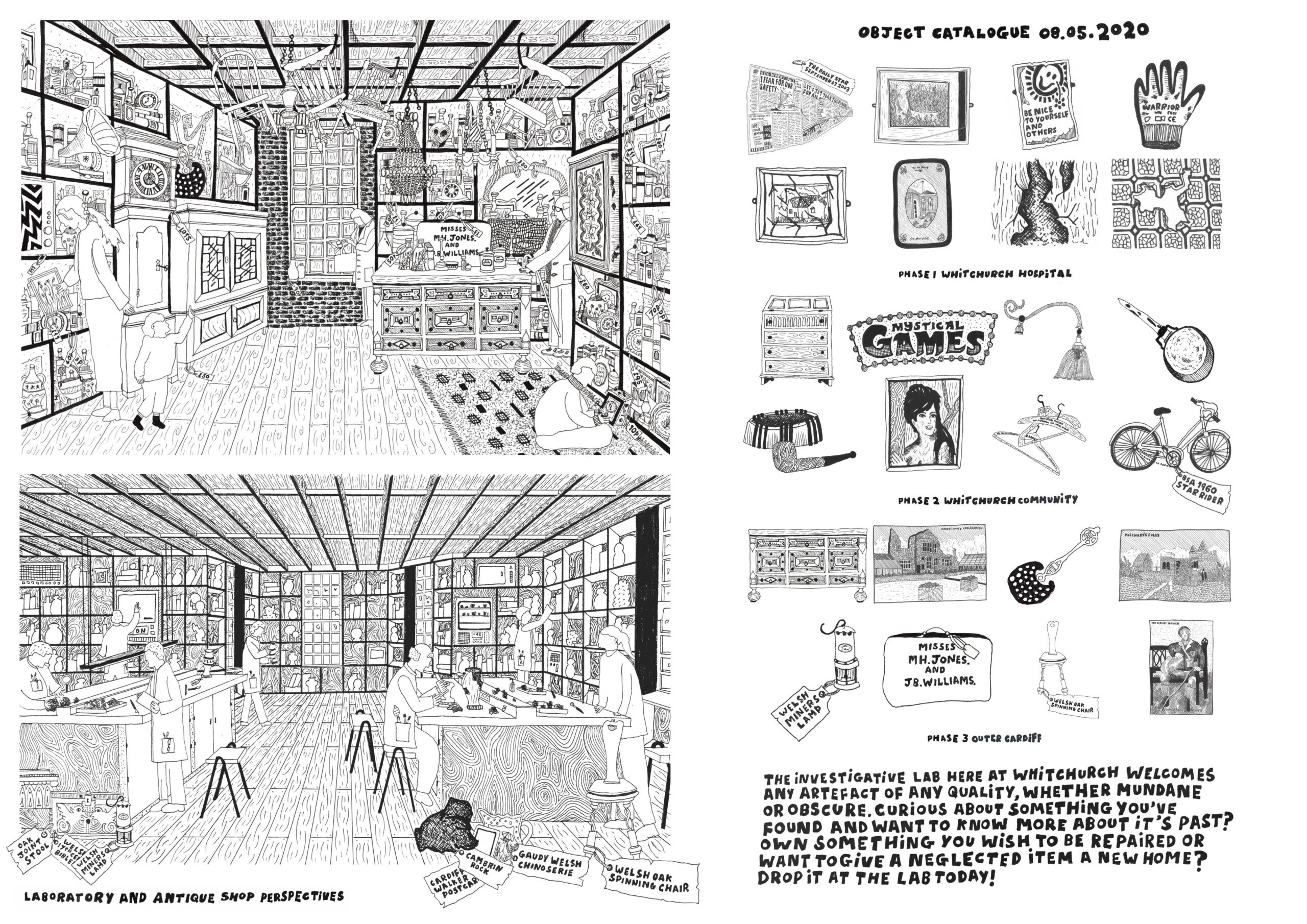

A methodology to archiving unfolds that engages with obstruction as a mechanism to archive; through the significance of obstacles and the joy that they can bring. Archiving through the joy of obstruction addresses the physical and figurative obstacles bounding Whitchurch Hospital today. This leads to an analysis of the physical obstruction of the Victorian boundary walls as well as the deterioration of the interior as a consequence of its neglect. Architectural interventions are developed to celebrate the joy of the existing obstructions, honouring the neglected and crumbling forms rather than viewing them as detrimental to future progress.
The interventions embrace the cyclical relationship between growth and decay, supporting layers that oscillate between revealing and concealing forms. The boundary walls retain their strong presence while the decaying interior is exaggerated to become curated ruins, layers of obstruction determining spaces and programme. New forms emerge from existing walls, growing from decaying remains. An archaeological laboratory sits beside an antique shop, investigating and celebrating local neglected objects, appreciative of both the unassuming and the obscure. Contextual architectural forms aim to support growth, a skeletal framework anticipating the formation of new layers. Interior walls become inhabited repositories, a physical archive of place, influenced by a collectors’ cabinet of curiosities and harmonious with the boundary walls as collective byproducts of Victorian age thinking.
The joy in the decay is its relationship with time. As the inevitable process of decay engulfs the new architecture, the more deeply rooted it becomes in its historic context, growing with new layers of artefacts whilst simultaneously peeling back layers of Whitchurch’s local history and heritage.
Portfolio Excerpts
Contact Details: Josephine Ashenhurst Email: jashenhurst@hotmail.co.uk

